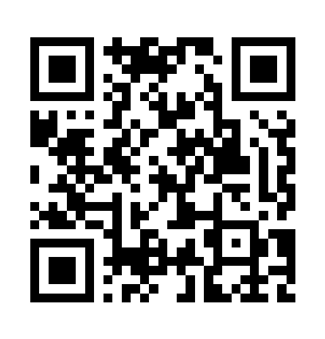The Intersectionality of Oppression in South Asian Women Amidst Technological Disruptions and Neocolonialism
The intersectionality of oppression in South Asian women is amplified by technological disruptions and neocolonialism, creating a complex web of challenges that extend beyond gender alone. Advances in technology, while promising, often marginalize these women by automating traditionally 'female' jobs and perpetuating existing biases in AI algorithms. Concurrently, neocolonial influences exacerbate economic inequalities, often reinforcing traditional power structures that further disenfranchise South Asian women.
WOMENS RIGHT
10/14/20234 min read


My post content
The Intersectionality of Oppression in South Asian Women Amidst Technological Disruptions and Neocolonialism
Introduction
The book "Gender and Political Economy: Explorations of South Asian Systems" edited by Alice W. Clark provides a multi-faceted overview of the conditions faced by women in South Asia, drawing attention to intersectionality, the lack of unionization in women's labor, and various forms of oppression (Clark, 1993). As we navigate through the age of artificial intelligence (AI), mass layoffs, and corporate sector evolutions, the themes elaborated in Clark's book gain renewed significance. This article delves into how these academic conversations resonate with the current plight of women, particularly in middle-class India's IT and corporate sectors.
Vulnerability to Technological Unemployment
The rapid development of artificial intelligence (AI) technologies has led to significant changes in the workforce and societal dynamics. While the advancements present various opportunities, they also come with challenges, particularly for women employed in white-collar jobs susceptible to automation (International Labour Organization, 2019). In South Asian systems, where the complex interplay of class, caste, and gender often hampers women's professional progress and work-life balance, the implications of AI adoption are multifaceted (Bardhan, 2016).
Women are disproportionately affected by technological disruptions. A report from the University of North Carolina’s Kenan-Flagler Business School indicated that almost 79% of working women are in roles susceptible to AI disruption compared to 58% of men (CNN, 2023). This reveals an increasing burden on women who already juggle work-life and domestic responsibilities. The absence of a union in many IT companies in India exacerbates this vulnerability (OECD, 2021).
Maternity Leave and Work-Life Balance
Maternity leave is less of a privilege and more of a necessity. However, in sectors like IT, especially in Indian companies, taking maternity leave often risks job security. This problem highlights the patriarchal nature of the work environment, deeming women as less "valuable" due to biological functions exclusive to them (HR Exchange Network, 2023).
Policy Interventions
Lack of gender-sensitive work policies further marginalizes women in the workforce. Companies must institute more gender-sensitive work policies, including maternity leave, that align with guidelines provided by global organizations like the ILO and UNESCO (UNESCO, 2019). Adopting these policies can lead to fairer societies and more robust economies (UN Women, 2015).While the intersectionality of oppression for women has been academically discussed (Clark, 1993), policy measures are lagging. UNESCO and the Inter-American Development Bank point out the need for more inclusive policies that cater to women in the digital age (UNESCO, 2021). The governmental silence on promoting a gender-sensitive work environment speaks volumes, especially when considering women's crucial roles in both the public and private domains.
The Gender Divide in the Age of AI:
Artificial intelligence stands at the crossroads of potential benefits and pitfalls when it comes to gender issues. On the one hand, AI can be employed to scrutinize the simultaneity of oppression rather than examining these aspects additively (McKinsey, 2021). On the other hand, AI also has the propensity to embed and scale human and societal biases (NPR, 2023).
Intersectionality and AI:
The intersectionality of class, caste, and gender contributes to women's vulnerability during mass layoffs due to AI adoption. A study highlighted that white-collar jobs, often held by women, are more susceptible to automation (Wiley Online Library, 2020). Intersectional frameworks can provide an alternative ethical lens to examine biases and challenges built into existing AI technologies (ResearchGate, 2023). However, AI can also offer solutions, identifying and mitigating the impact of human biases, provided its limitations are adequately addressed (Towards AI, 2022).
An intersectional framework offers a comprehensive method for analyzing biases and challenges inherent in current AI technologies (ResearchGate, 2020). This framework resonates well with the book's call for a methodology that dives deep into the simultaneity of class, caste, and gender-based oppressions (Clark, n.d.). It offers a unique methodology that could deepen AI research. The understanding of simultaneous oppression can lead to a more nuanced AI design, particularly in tools aimed at social justice
Recommendations:
AI Ethics Guidelines: Organizations should adopt gender-sensitive AI ethics guidelines, in line with the ILO’s recommendations for gender equality in the workplace (ILO, 2017).
Transparency and Accountability: AI companies should be transparent about their algorithms and allow for third-party auditing to identify biases (MIT News, 2022).
Inclusive Data Sets: Utilize diverse data sets that consider the simultaneous oppression due to class, caste, and gender, as recommended by the Capability Approach theory of social justice (APA Online, 2023).
Engage Feminist Discourse: Encourage the inclusion of feminist discourses and practices within AI development cycles (APC, 2020).It is critical to engage feminist theory and practice with ICTs and AI, enriching the disciplinary approaches and concerns surrounding the use and implications of these technologies (APC, 2018).
Union Support: Unions should extend support to women in white-collar jobs, which are more susceptible to automation (Wiley, 2021).
Governmental Initiatives: State governments should create frameworks that ensure a gender-sensitive work culture to augment the issue’s seriousness (ILO, 2022).
Conclusion
While AI offers the potential to advance social justice aims, particularly concerning the nuanced issue of gender inequality in South Asian systems, its limitations must be adequately considered. Addressing these limitations and incorporating gender-sensitive policies could prove invaluable in establishing a more inclusive future.The themes outlined by Alice W. Clark around the simultaneity of oppression and intersectionality (Clark, 1993) are not historical artefacts but living realities. These issues are magnified in the age of AI, corporate changes, and neocolonial pressures. Governmental bodies, corporations, and civil society must act collectively to mitigate the multiple layers of oppression faced by women in India today.
References
Clark, A. W. (Ed.). (1993). Gender and Political Economy: Explorations of South Asian Systems. Oxford University Press.
CNN. (2023). Women’s employment faces AI disruption. Retrieved from https://www.cnn.com/2023/06/21/economy/women-employment-ai-disruption/index.html
OECD. (2021). Bridging the Digital Gender Divide. Retrieved from https://www.oecd.org/digital/bridging-the-digital-gender-divide.pdf
UNESCO. (2021). Artificial Intelligence, Platform Work, and Gender Equality. Retrieved from https://unesdoc.unesco.org/ark:/48223/pf0000380861
HR Exchange Network. (2023). HR News: AI Takes More Jobs from Women. Retrieved from https://www.hrexchangenetwork.com/hr-talent-management/news/hr-news-anheuser-busch-layoffs-ai-takes-more-jobs-from-women-parental-leave-gives-others-a-chance-and-more


